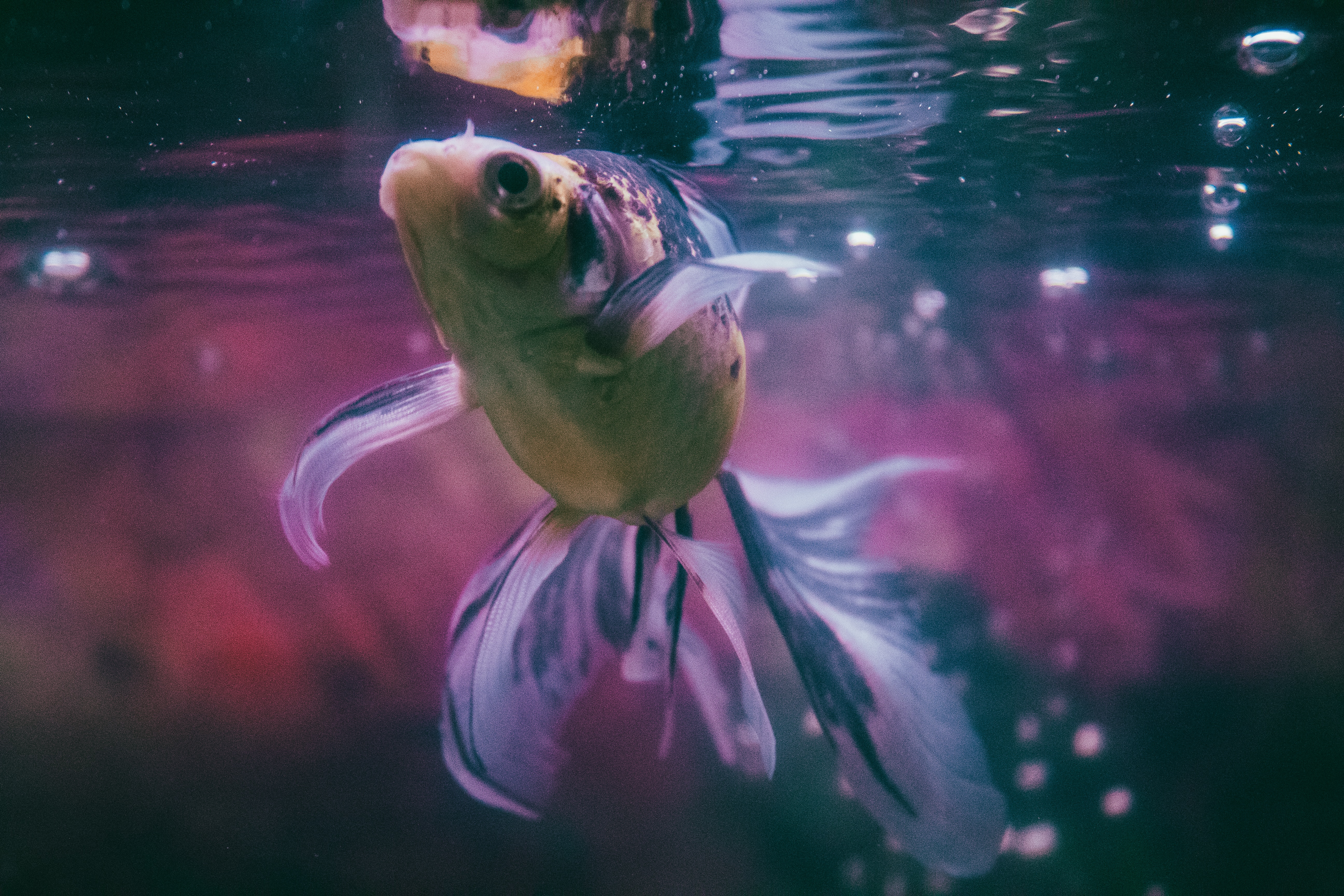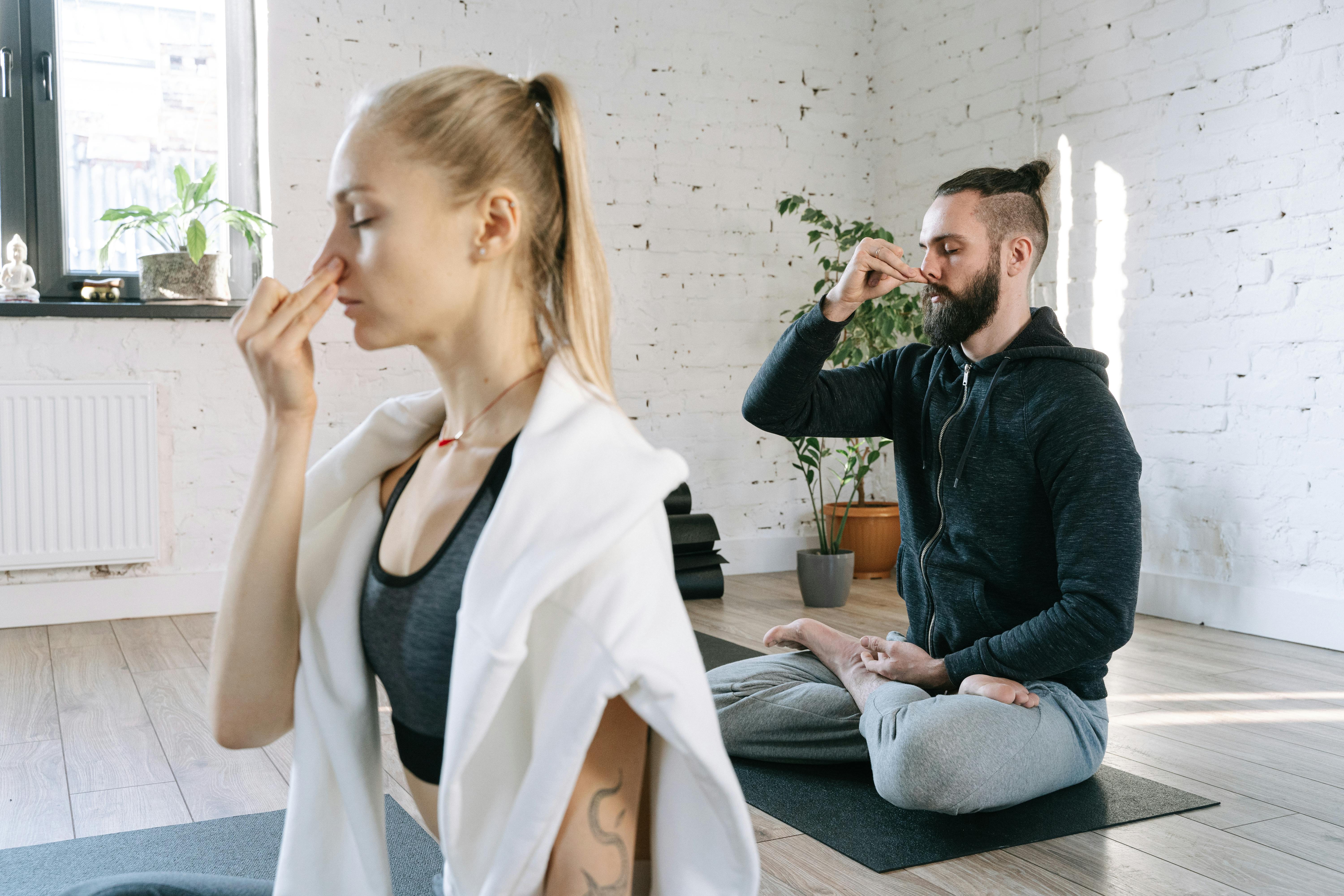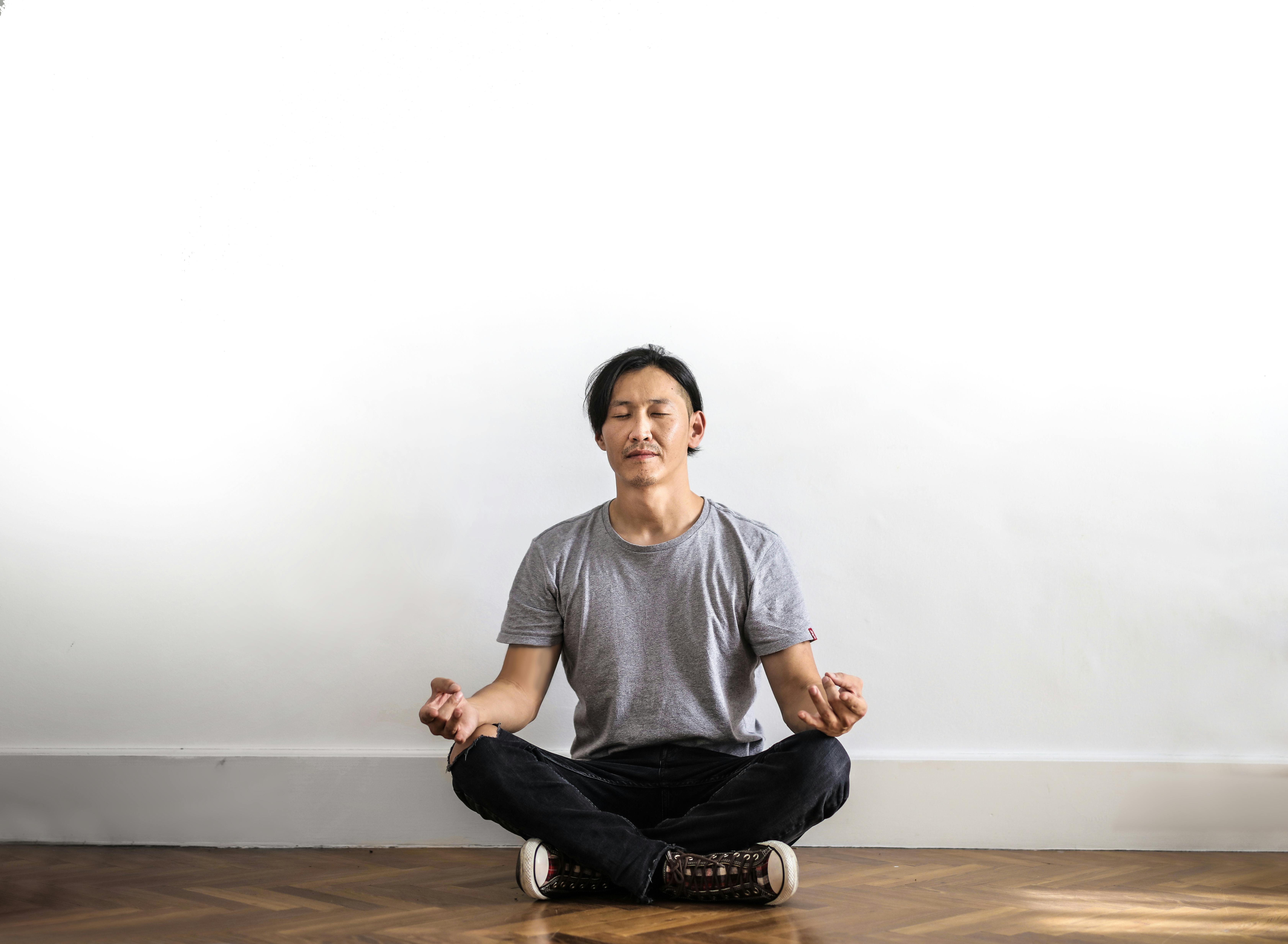There’s nothing more natural and universal than breathing. Animals do it, trees do it, all living beings do it. We inhale and exhale going about our daily lives, without thinking about it at all, like our eyes blinking or our hearts beating. This completely changes the moment we find ourselves in a yoga class and realize there's a whole art to breathing.
In yogic breathing practices — pranayamas – there's a difference between “default mode” breathing and turning it into a conscious, deliberate act.
Yoga brings consciousness to our breathing, which basically puts this autonomous function under our control. So, your next breath becomes a tool that you can use to tap into the internal state of your body. Through breathing, you realize that you can calm your mind, balance your emotions, steady your heartbeat, and relax any tense muscles.
Before you get too excited, keep in mind that it’s not exactly magic. Pranayama won’t yield superhuman patience when someone cuts you off in traffic; it’s not a fast track to tackling all the tricky poses; and, it won’t allow you to voluntarily reduce your heart rate while running. Just like physical exercise and meditation, think of it as a really handy tool that you've been carrying with you all your life but never quite used to its full potential.
So, let’s learn more about breathing and how to use it to your advantage.
The History of Breathwork in Yoga
The concept of breathwork or breathing techniques in yoga is known as pranayama. It is one of the three defining facets of modern yoga. Although it might be often overshadowed by the physical postures (asanas) and meditative practices, it’s nonetheless as vital and transformative as the former two.
Vedas and Upanishads
Pranayama, a Sanskrit term where “Prana” means life energy and “Yama” control, is deeply rooted in ancient Indian philosophy, and we can trace its origins back to the early Vedic texts, where the word “prana” is first mentioned. However, it was in the Upanishads, a series of Hindu scriptures, that the idea of controlling this life force through breath first emerged. These texts laid the philosophical foundation for the practice of pranayama, suggesting that mastery over breath could lead to mastery over the mind and, consequently, one’s life force.
Patanjali
Later, the Yoga Sutras of Patanjali further defined and systematized the practice of pranayama. The sage Patanjali saw pranayama as an essential step in the path of ashtanga yoga, the eight-limbed practice leading to samadhi, or enlightenment. According to him, breath control is not just a physical exercise but a spiritual discipline, offering a bridge between the physical world and inner consciousness.

Pranayama in modern yoga practices
As yoga evolved through the years, so did the pranayama practice. Some practitioners believed that different Pranayama techniques could produce distinct effects — from cooling and calming the body to increasing digestive fire. And while there are still many widespread beliefs about pranayama, some lack scientific proof.
In modern yoga practices, from hatha to vinyasa, breathwork is a standard element, which is often used as a gateway to deeper meditation and mindfulness. Techniques like Ujjayi, Nadi Shodhana, and Kapalbhati are now practiced in yoga studios worldwide — if you practice yoga regularly, I’m sure you’re familiar with some of these techniques.
The growing popularity of pranayama piqued the interest of scientists, which means that the body of evidence about tangible health benefits from pranayama is also piling up.
The Science of Breathwork
Not all ancient beliefs about pranayama stood the test of time, which is okay because what modern science tells us is still pretty mind-blowing.
1. Pranayama for dealing with stress and anxiety
Pranayama reduces stress and improves anxiety symptoms. A 2017 study found that after eight weeks of breathwork training, participants had significantly lower levels of cortisol, which indicates a decrease in stress levels. This was also supported by a 2023 meta-analysis that looked at randomized-controlled studies and concluded that breathwork indeed does have a positive effect on stress and mental health in general. And for those who suffer from performance anxiety, research has also shown that pranayama has a significant positive effect on test anxiety and test performance.
2. Pranayama’s physical health benefits
Pranayama improves respiratory function (lung capacity) and cardiovascular health. Several studies have investigated the therapeutic effects of pranayama on our lungs and heart among healthy participants and patients with respiratory diseases such as bronchial asthma and chronic obstructive pulmonary disease (COPD). The results were positive and indicated that pranayama could benefit patients, improve lung capacity among healthy participants, and even enhance the functions of the lungs among athletes such as runners.
In addition to respiratory diseases, breathwork can also benefit cancer patients. Research has shown that patients who practiced pranayama reported lower levels of cancer-related fatigue after their radiation therapy. Another study found that pranayama helps alleviate some chemotherapy-associated symptoms (fatigue, sleep disturbance, anxiety, depression, stress) and improve the quality of life among cancer patients. Moreover, some studies have even found that breathwork improves the antioxidant status of breast cancer patients undergoing radiation therapy, which could help in reducing the toxicities associated with radiation therapy.
Last but not least, pranayama improves sleep quality and helps with insomnia. In one study from 2011, researchers found that a yoga routine consisting of asanas, meditation, and breathing techniques helped reduce chronic psycho-physiological insomnia. Other studies have found that pranayama techniques improve sleep quality among COVID-19 patients and the elderly.

3. Pranayama’s mental health benefits
Pranayama has multiple confirmed mental health benefits. In 2017, a paper published in The International Journal of Indian Psychology found that Bhramari pranayama practices improved the mental health of college students. More specifically, the researchers found that students who practiced pranayama experienced greater individual peace, happiness, and self-esteem, developed an optimistic attitude, and had proper mind-body coordination.
Pranayama has also been linked to alleviating depressive symptoms and improved resilience. Research shows that participants who practiced pranayama twice a week for over a month had lower scores on the scale for depression and higher scores on the scale for resilience. If you struggle with anxiety, you can go through David’s free learning series on dealing with anxiety, which covers several pranayama breathing techniques that help sufferers alleviate their symptoms.
When it comes to regulating emotions and mood, there’s some proof of that, too. One systematic review found that slow breathing techniques are positively related to emotional control and psychological well-being. Different breathing techniques were also found to improve mood and higher brain functions, such as problem-solving skills.
All in all, it seems that pranayama and its many breathing techniques could help us calm down, look at the world in a more positive light, and be more resilient when faced with difficult times. So, if your primary motivation for yoga is emotional well-being, including pranayama in your daily routine could be a true game-changer.
Different Ways to Breathe
There’s no doubt that pranayama deserves the spotlight as one of the defining aspects of yoga. But, what different breathing techniques does it include? Just like the many different yoga styles, practicing pranayama can be a very unique and personal experience — one that you can tailor to your own liking and needs.
Here are some of the most popular pranayama techniques. You can also head over to our yoga breathing exercises if you prefer working with an instructor.
1. Ocean Breath (Ujjayi Pranayama)
Ujjayi is your go-to breath for maintaining focus and warmth during your practice. So, it’s not surprising that it’s most commonly used to support yoga postures in vinyasa. To do ujjayi, imagine fogging up a mirror but with your mouth closed. That slight constriction in your throat gives your breath a whispery quality, sounding a bit like the ocean, hence the name. This breathing technique is great for generating heat and keeping your mind focused.
How to perform ujjayi breath: Begin by sitting comfortably with a straight spine. Inhale deeply through your nose. As you exhale, slightly constrict the back of your throat to create a soft hissing sound, like you would if you were trying to fog a mirror on a cold winter day. But keep your mouth closed throughout and focus on creating a smooth, steady rhythm. The sound of your breath can be a great focal point during your yoga practice and help you maintain a meditative state. You can try our short ujjayi classes with David and with Rachel.
2. Alternate Nostril Breathing (Anulom Vilom or Nadi Shodhan)
You know how you always breathe better from one nostril? Well, with alternate nostril breathing, the goal is to clear both nasal passages so you can improve your lung function and bring more fresh oxygen to the brain. You can also try our alternate nostril breath class with David.

How to perform nadi shodhan: Sit in a comfortable position with your spine straight. Using your right hand, close your right nostril with your thumb and inhale slowly and deeply through your left nostril. Then, close the left nostril with your ring finger, release your thumb, and exhale through the right nostril. Inhale through the right nostril, close it, then exhale through the left. This completes one cycle.
There are two ways to do this technique. Anulom vilom is when you breathe normally without holding your breath, while nadi shodhan is the same technique but involves holding your breath for as long as you can after you inhale and before you exhale.
Whatever you choose, you should definitely try it as it will feel like a “breath of fresh air” for your brain.
3. Skull Shining Breath (Kapalabhati)
If ujjayi is the warm-up act, kapalabhati is the main event. It is an energetic exercise that involves short, explosive exhales like racing to be the one to blow all the candles on your birthday cake in a single puff before the others join in. It’s believed that kapalabhati helps clear the lungs and make them stronger; reduces heartburn, acidity, and gas; and even helps you get rid of dark circles under the eyes.
How to perform kapalabhati: Yet again, sit comfortably but keep your spine straight. Take a few deep breaths to prepare. To begin, inhale normally and then exhale forcefully through your nose, contracting your abdominal muscles to push the air out as fast as you can. The inhale should be your normal, everyday inhale, following the forceful exhale. The focus is on the exhalation, with the inhalation being a natural response to the release of the contracted abdominal muscles. Start with a slower pace and gradually increase the speed as you become more comfortable with the technique.
You can also try David’s kapalabhati class video.
4. Bee Breath (Bhramari)
Bahramari is another famous and fun breathing technique that is usually associated with improved sleep quality and reduced hypertension.
The sound? Ever heard the humming of a bee? Bhramari mimics that. This technique involves making a humming sound while exhaling, and the vibration from the humming can be incredibly soothing for the mind, feeling like a gentle, internal massage for your brain.
How to perform bhramari: Sit in a comfortable position, close your ears with your index fingers, close your eyes, and relax your face. Take a deep breath through your nose. As you exhale, make a low-pitched “hmmm” sound that mimics a buzzing bee. You’ll be able to feel the vibration from the humming throughout your head, which is very soothing. Repeat this several times, focusing on the sound and the vibration it creates.
5. Cooling Breath (Sitali)
This one's a bit quirky, but the instant cooling effect is really cool (pun intended!). To do it, you should curl your tongue and inhale through it, just as if your tongue were a straw through which you’re sipping. As the cold air passes through your tongue, you’ll feel a very refreshing sensation. It’s perfect for cooling down the body and calming the mind, especially when practicing yoga on those hot, stuffy days.
How to perform sitali: Sit comfortably with your eyes closed. Roll your tongue lengthwise into a tube (if you can't curl your tongue, you can slightly part your lips, bringing your tongue toward the front of your lower lip). Inhale deeply through the curled tongue (or through your lips), feeling the cooling sensation of the air as it passes over your tongue. Close your mouth and exhale slowly and completely through your nose. Repeat for several breaths, focusing on the cooling sensation during each inhalation.
How to Incorporate Breathwork into Your Yoga Routine
If the research got you excited and these five breathing exercises sounded fun, you should definitely incorporate pranayama into your daily yoga routine.
To do this, start small and simple. You don’t have to leap into mastering every technique right away. Maybe pick one that you like the most and go from there. Next time you’re on the mat, dedicate a few minutes at the beginning or end of your practice to this technique. You can either use it to set the tone for your session or to wind down at the end of it.
Gradually, as you get more comfortable, you can begin to explore other techniques. It’s like adding spices to your favorite dish; each one brings a different flavor and experience. Also, do a little more in-depth research on each breathing exercise. For instance, ujjayi is amazing to try during your asanas to maintain a rhythm in your practice, while kapalabhati can be great in the morning to start your day with high energy or at the beginning of your yoga session to warm up.
Slowly, you’ll discover what works best for you. But, remember: consistency is key. It’s better to practice a few minutes of pranayama daily than to do a long session every once in a while. Think of it as a daily check-in — as the apple a day that keeps the doctor away.

Also, be mindful of your body and its limits. Don’t underestimate the exercises, as they’re quite powerful, and if you’re forcing your body too much, they can make you dizzy and lightheaded. So, if something feels off, ease up.
Finally, have fun with it! Experiment, explore, and see how these ancient techniques can fit into your modern life. Just like yoga itself, the beauty of pranayama lies in its versatility and adaptability. You can rely on one breathing exercise, mix them up, or have a routine that best works for you. No limits or rules.
One Breath at a Time…
Pranayama is much more than just inhaling and exhaling. I like to think of it as a union of art, science, and a little bit of ancient wisdom.
The practice itself is incredibly powerful, but like all other things, it loses its magic in isolation. To reap the most benefits, it's best to incorporate it into your daily yoga routine and use it as a tool, not only to improve your asana practice but also to deepen your meditations.
And as I say goodbye, I want to remind you that each breath you take represents a new opportunity – to connect, explore, and transform. The simplest acts can hold the deepest meanings. Whether you're in the middle of a hectic day or enjoying a moment of peace, your breath is always with you, and you can take control of it.



Comments
Existing Comments